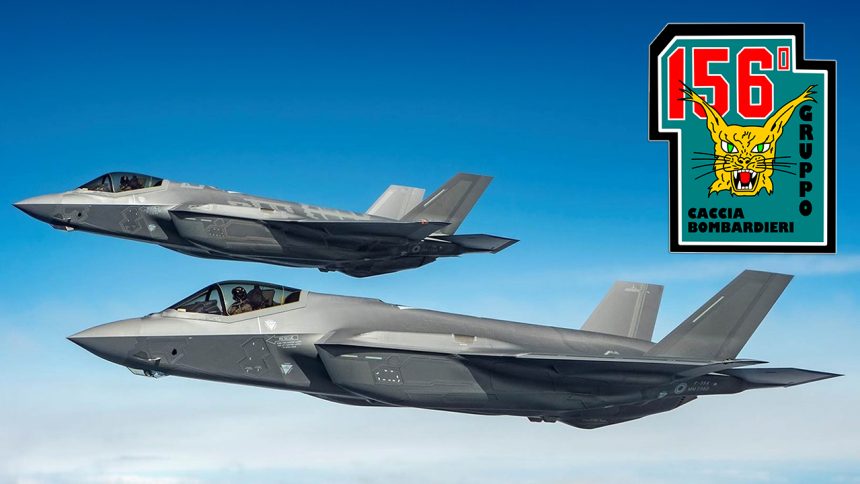The 156° Gruppo (Squadron) at Luke AFB, Arizona, will be the F-35 OCU (Operational Conversion Unit) of the Italian Air Force.
On July 2, 2024, alongside the celebration of the first 1,000 flight hours achieved by the F-35A assigned to the 6th Wing, the 156th Squadron “Linci” (Italian for “Lynxes”) was reactivated at Luke Air Force Base, Arizona.
The primary mission of the squadron, which served as a fighter-bomber squadron with a focus on maritime attack and reconnaissance missions until it was temporarily deactivated at Ghedi Air Base in September 2016, will be to provide operational conversion to the aircrews assigned to the F-35A aircraft.
The Squadron will use the already existing facilities of the F-35’s Pilot Training Center located at Luke AFB.
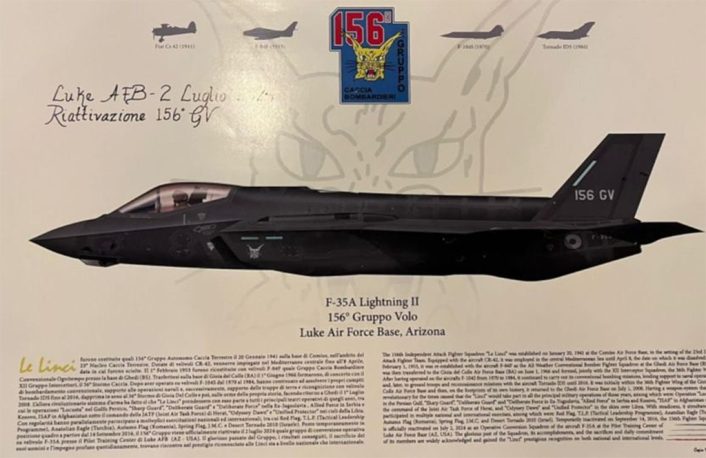
In 2022, with the arrival of the first aircraft, the 6° Stormo became the second Italian Air Force Wing to operate the F-35A; the other one is the 32° Stormo, based at Amendola AB, whose child-unit, the 13° Gruppo (Squadron) has been operating with the 5th generation aircraft since 2016 and achieved IOC (Initial Operational Capability) in 2018.
The F-35 Pilot Training Course
Currently, the conversion course for Italian pilots assigned to the F-35A line takes place at the 56th Fighter Wing in Arizona. This Fighter Wings falls under the Air Education and Training Center Command of the USAF and provides advanced training for conversion to F-16 and F-35A aircraft, with six squadrons (excluding the 156th) operating on the Lightning II aircraft.
The Italian Air Force has been present at the American base for some time, supporting pilot training activities with a contingent of seven F-35As deployed in Arizona under the command of RAMI (Rappresentanza Aeronautica Militare Italiana – Italian Air Force Mission) Eglin. Specifically, the training, known under the American standards as Basic Course (B-Course), is provided by the 62nd Fighter Squadron.
This program trains pilots from Italy, Norway and the United States, using F-35A aircraft from all three nations. The Instructional staff of the squadron is also an international team, with instructors hailing from Italy, Norway and the United States. Luke AFB hosts the training program for F-35A pilots from six foreign nations including Denmark, the Netherlands, Norway, Italy and Belgium.
The 156th Squadron will operate independently, as a RAMI, to provide the highest level of training to the newly assigned pilots.
History of the 156th Squadron
The 156th Squadron was established on Jan. 20, 1941, at Comiso airport, in Sicily. Initially equipped with Fiat CR-42 aircraft, the squadron was employed in central Mediterranean operations, escorting torpedo bombers until it was disbanded on April 8. On February 1, 1953, the squadron was reconstituted at Ghedi Air Base as an all-weather conventional fighter-bomber squadron flying the F-84F aircraft. Following the Cuban Missile Crisis, the 156th Squadron was the first Italian unit to achieve “Strike” capability for the use of nuclear weapons.
The 156th Squadron, transferred to Gioia del Colle Air Base on July 1, 1966, formed the 36° Stormo (Fighter Wing) along with the 12th Interceptor Squadron. Shortly before the transfer, the 156th Squadron abandoned its nuclear capability, returning to its initial role of conventional bombing. At Gioia del Colle, the squadron transitioned to the F-104S aircraft, which it operated until 1984, performing conventional bombing and naval support missions.
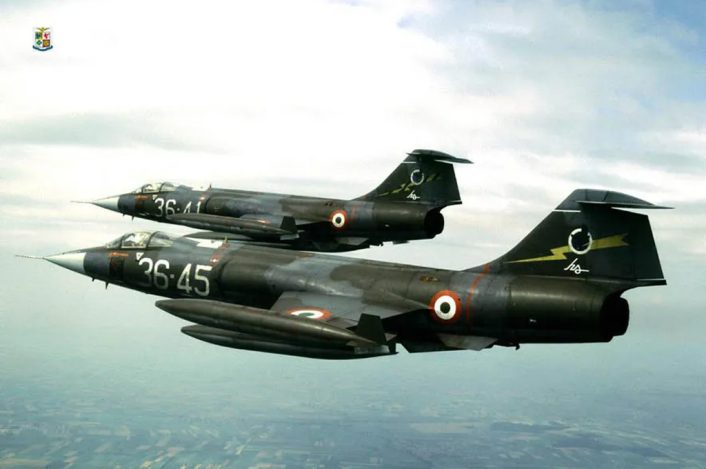
From 1984, the squadron was equipped with the Tornado IDS aircraft, continuing its previous missions and expanding its capabilities. With the Tornado, the 156th Squadron participated in Operation Desert Storm during the first Gulf War and was later involved in NATO operations in the Balkans, participating in Operation Sharp Guard, Operation Deliberate Force, and Operation Allied Force.
On July 1, 2008, after 42 years, the 156th Squadron returned to Ghedi under the command of the 6th Wing. In addition to its attack role, the squadron was also assigned reconnaissance tasks. The squadron was involved in 6th Wing deployments in operations such as International Security Assistance Force (ISAF) in Afghanistan, Odyssey Dawn and Unified Protector in Libya, and Operation Inherent Resolve in Iraq. The squadron was disbanded on September 14, 2016.
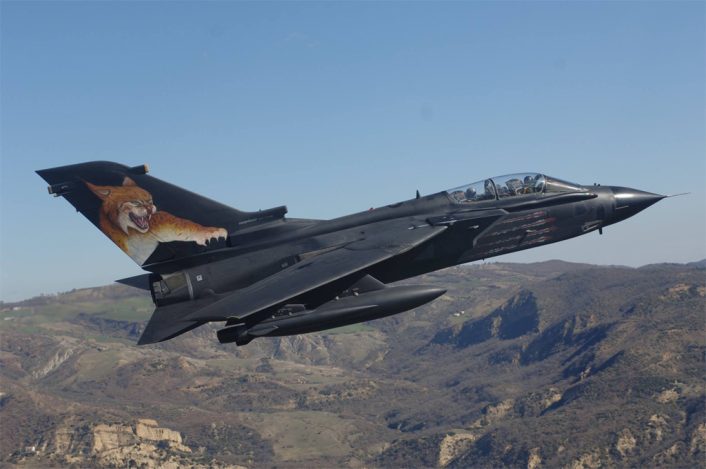
Operational Conversion
As explained, the role of the 156th Gruppo Volo at Luke AFB will be to prepare pilots to the F-35A, by bridging the gap between LIFT (Lead-In Fighter Training) and operational deployment. While its full responsibilities have not been disclosed yet, it’s quite reasonable that they will be in line with those of the other OCUs, that include advanced training; standardization and IPs qualification.
These tasks take on even greater importance if we consider the characteristics of this weapon system, a pinnacle of modern air combat technology: the F-35A is a conventional takeoff and landing (CTOL), single-engine, single-seat, highly advanced omni-role, supersonic stealth fighter featuring diverterless engine inlets, internal weapon bays and external stores stations.
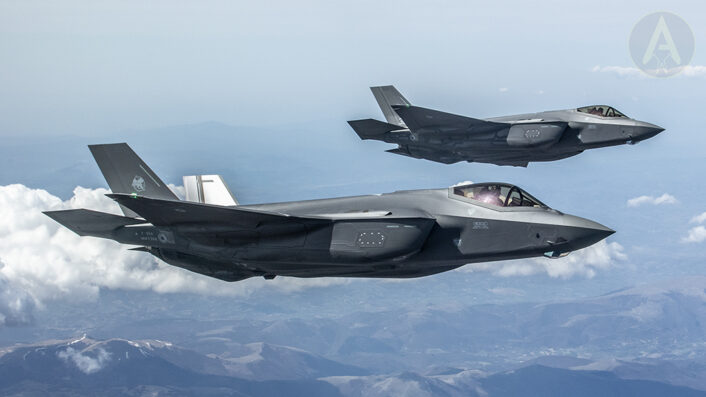
Its APG-81 radar, employing cutting-edge active electronically scanned array (AESA) technology enables simultaneous operations for air-to-air, air-to-ground and electronic warfare missions, underscoring its versatility and combat readiness. Enhancing its combat effectiveness, the F-35A integrates state-of-the-art sensor systems and data fusion capabilities.
The Electro-Optical Distributed Aperture System (DAS) envelops the aircraft with a protective sphere to provide enhanced missile warning, aircraft warning and day/night pilot vision.
Pilots benefit from the most advanced Helmet Mounted Display System, which integrates essential tactical information directly onto the helmet’s visor.
The F-35 Lightning II incorporates advanced Tactical Data Link capabilities crucial for modern warfare, utilizing both the Multifunctional Advanced Data Link (MADL), specifically designed for stealth operations, and Link16 systems.


